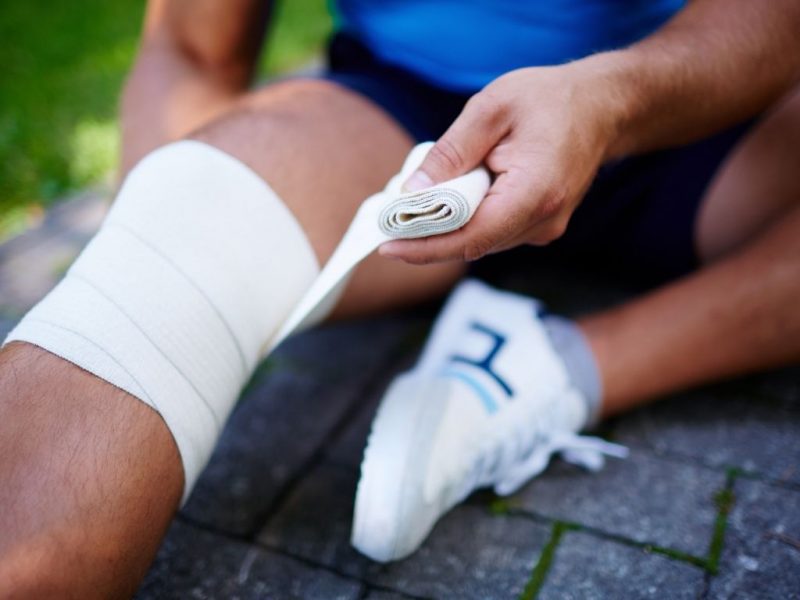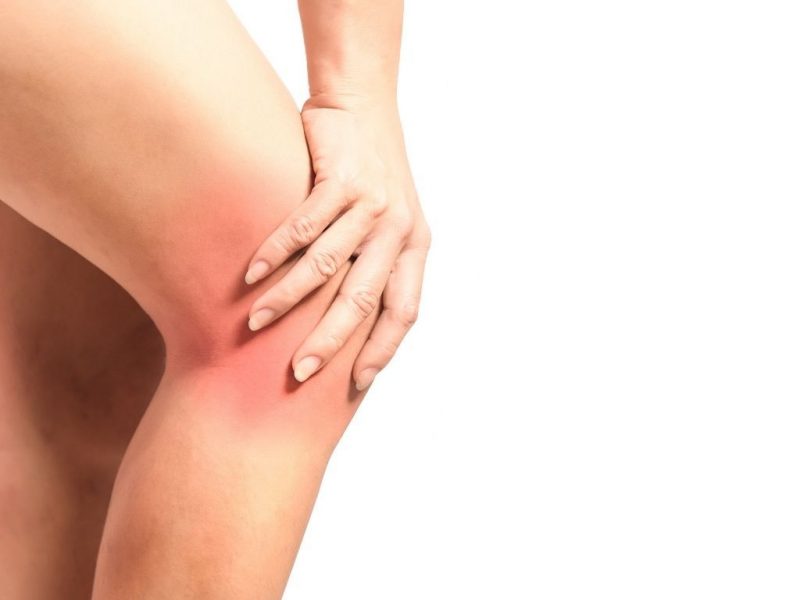Sprains are not only sports injuries. If you don’t do sports, you might still trip over or misstep and you sprain your knee, shoulder, or even your finger. Without medical help, it is difficult to determine how severe the injury is. How you start treating the injury is also important. If you follow the recommended treatments, the otherwise long recovery time can be significantly shorter.
This article answers the following questions about sprains:
- What can cause sprains?
- How severe can sprains be?
- What symptoms do sprains have?
- Treating sprains
- The sprain healing time
What can cause sprains?
If we trip over, misstep or a ball hits our finger too hard, a sprain can occur. One might think that athletes are at greater risk, but this is only half right. Of course, there are sports that put extreme pressure on the joints and due to sudden direction changes, there is a risk of sprains. However, the muscles and joints of athletes are stronger, so for them, a lack of warm-up increases the risk of injuries. For those who don’t exercise at all, the muscles are weaker, and the joints are stiffer. This inactive lifestyle and obesity increase the chances of sprains and strains. In addition, if someone has excess weight, the sprain might even be more severe and may be accompanied by torn ligaments.
We can reduce the risk of sprains if we pay attention to our weight, exercise regularly, warm up before a workout session, and stretch properly after.
How severe can sprains be?
It’s a mild sprain when the range of motion of the joint is slightly limited, but you can move the limb and the pain is tolerable. In case of a moderate sprain, the ligament may partially be torn as well. The range of motion of the joint is significantly limited, and the pain is more severe. When a severe sprain occurs, the ligament is completely torn, you can’t move the joint, and the injury is accompanied by severe pain. Mild and moderate sprains usually don’t require surgery, but when the ligament is torn, the injured body part needs surgery.
What symptoms do sprains have?
Sprains are always accompanied by sudden, severe pain. The site of the injury swells, and if the ligament is torn, bruising can occur. The range of motion is limited, and in severe cases, movement can be completely reduced.
Treating sprains

When treating a sprain, the most important thing is to rest the injured body part, avoid moving it.
Cooling the joint reduces pain and swelling, so it’s recommended to use a cold compress. However, make sure not to use it for more than 15 minutes at a time. We can secure the injured body part with a bandage wrap, but it shouldn’t be too tight. In order to reduce pain and inflammation, use non-steroidal anti-inflammatory treatments. These can be meds, creams, gels, patches. The advantage of transdermal medications over oral medications is that there are no negative side effects on the digestive system. In addition, patches offer an additional advantage over topical medications, as the anti-inflammatory patch delivers the active agent at a consistent dose for up to 12 hours.
If bruising occurs, it should be treated with special creams and ointments that help absorb the hematoma. Make sure to treat sprains even if they don’t appear to be too severe, as the ligaments may be damaged as a result of the injury, thus increasing the risk of a joint sprain or strain in the future. In case of a mild sprain and partially torn ligament, the injury heals on its own. However, adhesions may form in the joint. This injury doesn’t require a cast, it’s stimulated with physiotherapy.
Unfortunately, surgery is unavoidable with a completely torn ligament.
The sprain healing time
In case of mild sprains and partially torn ligaments, after the pain decreased and the hematoma was drained, the patient can slowly start moving the limb again however, it is necessary to use braces for at least 3 more weeks to prevent sideways movement. In addition, you have to do the exercises that the physiotherapist shows you. Even the mildest sprains take 3-6 weeks to completely heal, moderate sprains take 2-3 months, while severe sprains can take up to 8-12 months. As stated earlier, completely torn ligaments require surgery. After surgery, it is necessary to wear rehabilitative braces for support and physical therapy is also important. We can only talk about complete recovery if the muscles are strengthened. Healing is slow because blood flow in the ligaments is poor, making it difficult for the tissues to heal. In some cases, physical therapy may be needed to improve circulation.
This showed that even a mild sprain can seriously limit your movement, and not only your daily routine turns upside down, but full recovery can take a lot of money and time. So, try to avoid injuries at all costs. Pay attention to your weight, exercise regularly, and never skip the warm-up.

